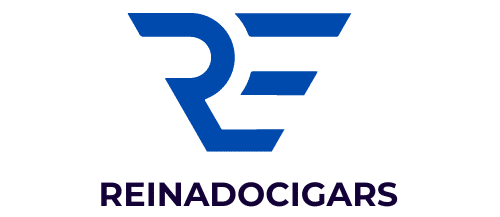What are the challenges and solutions for maintaining indoor air quality in commercial real estate?

In the world of commercial real estate, the importance of maintaining the quality of indoor air cannot be overstated. As tenants and businesses become increasingly concerned about health and wellness, air quality has become a significant factor in attracting and retaining tenants. This growing trend is leading property owners and managers to face a myriad of challenges when it comes to maintaining indoor air quality. This article will explore these challenges and offer practical solutions.
The Challenges in Maintaining Indoor Air Quality
Before diving into the solutions, you must first understand the challenges. This section will highlight some of the most common obstacles in maintaining indoor air quality in commercial real estate.
Avez-vous vu cela : How can real estate investments be tailored to capitalize on trends in remote and flexible workspaces?
Disparities in Indoor Air Quality Standards
One major challenge in maintaining indoor air quality is the lack of uniform standards. Different countries, regions, and even buildings may have different criteria for what constitutes ‘good’ indoor air quality. This lack of consistency can make it difficult for commercial real estate owners and managers to know what standards to meet or exceed.
Aging Infrastructure and Outdated HVAC Systems
Many commercial buildings are decades old and are fitted with outdated Heating, Ventilation and Air Conditioning (HVAC) systems. These systems may not be capable of filtering out modern pollutants or may simply be inefficient due to their age. The cost and disruption of replacing or upgrading these systems can be a significant obstacle.
Cela peut vous intéresser : What are the implications of advanced robotics and automation technologies on real estate construction efficiency?
The Impact of Occupant Behaviour
Occupant behaviour can have a significant impact on indoor air quality. Everything from smoking to poor hygiene, to the use of certain cleaning products can negatively affect the air. Changing occupant behaviour or implementing rules to govern it can be a sensitive and challenging issue.
Solutions for Maintaining Indoor Air Quality
While the challenges can seem daunting, there are effective solutions available. The following sections will elaborate on these solutions, providing options for commercial real estate owners and managers to improve indoor air quality.
Implementing Air Quality Monitoring Systems
One solution to maintaining indoor air quality is the use of air quality monitoring systems. These systems can measure various factors, including temperature, humidity, levels of carbon dioxide and volatile organic compounds (VOCs), among others. By constantly monitoring these factors, building managers can identify issues before they become problematic and take corrective action.
Upgrading HVAC Systems
Another effective solution is to upgrade the building’s HVAC system. Modern systems are more efficient and better equipped to filter out pollutants. While the cost can be considerable, the investment can pay off in the long run through lower energy bills, fewer health-related issues among tenants, and a more attractive property for potential tenants.
Adopting Green Cleaning Practices
Green cleaning practices can greatly improve indoor air quality. This means using cleaning products and methods that have a minimal impact on the environment and human health. In addition to improving air quality, adopting green cleaning practices can also contribute to a property’s sustainability credentials, a factor that is increasingly important to tenants.
Encouraging Healthy Occupant Behaviour
Finally, encouraging healthy occupant behaviour can play a big part in maintaining indoor air quality. This could involve implementing no-smoking policies, providing guidelines on the use of personal products that can affect air quality, or educating tenants on the importance of good hygiene.
The Role of Technology in Improving Indoor Air Quality
Technology is playing an increasingly important role in maintaining and improving indoor air quality. From advanced air filtration systems to smart building technology that can monitor and control air quality in real-time, the possibilities are exciting. This final section will delve into the role of technology in this area.
Advanced Air Filtration Systems
Advanced air filtration systems can effectively remove pollutants from indoor air. They often utilise technologies such as High-Efficiency Particulate Air (HEPA) filters, activated carbon filters, or Ultraviolet Germicidal Irradiation (UVGI) to kill or remove harmful substances.
Smart Building Technology
Smart building technology can take indoor air quality management to the next level. These systems can automatically adjust temperature, humidity, ventilation rates and more, based on real-time air quality readings. They can even provide alerts when certain thresholds are exceeded, allowing for quick and proactive action.
Predictive Maintenance
Predictive maintenance can also play a role in improving indoor air quality. By using data and analytics, potential issues with a building’s HVAC system or other components can be identified and addressed before they lead to a decrease in air quality.
As you can see, maintaining indoor air quality in commercial real estate can be challenging, but with the right approach and tools, it is certainly achievable. As attention to health and wellness continues to grow, those in the commercial real estate sector who embrace these challenges and solutions will undoubtedly be at an advantage.
The Importance of Government Regulations and Policies
Government regulations and policies also play a crucial role in improving indoor air quality in commercial real estate. The standards set by governments can serve as a baseline for property owners and managers, guiding them towards achieving and maintaining good indoor air quality.
Government Regulations and Standards
Government agencies around the world have developed standards and guidelines for indoor air quality. For instance, the United States Environmental Protection Agency (EPA) has set standards for pollutants commonly found indoors, such as lead, asbestos, and radon. Similarly, the World Health Organization (WHO) has issued guidelines on indoor air quality, covering biological pollutants, radon, dampness, and mould among others. Adhering to these standards can help ensure that commercial properties provide a safe and healthy environment for occupants.
Building Codes and Certifications
Building codes often incorporate requirements for ventilation and air quality. Further, certifications such as the Leadership in Energy and Environmental Design (LEED) and the Building Research Establishment Environmental Assessment Method (BREEAM) can also serve as benchmarks for indoor air quality. These certifications not only provide guidelines for maintaining good indoor air quality, but can also enhance a property’s marketability.
Government Incentives and Subsidies
In some instances, governments offer incentives and subsidies to encourage property owners and managers to improve indoor air quality. These can be in the form of tax breaks, grants, or low-interest loans. By availing of these incentives, the cost of upgrading HVAC systems or implementing other measures can be significantly reduced.
Conclusion
Maintaining indoor air quality in commercial real estate is a multi-faceted challenge, involving factors ranging from outdated infrastructure to occupant behaviour. However, with the right strategies and the use of modern technologies, it is feasible to overcome these challenges. Implementing air quality monitoring systems, upgrading HVAC systems, adopting green cleaning practices, and encouraging healthy occupant behaviour are all crucial steps towards this goal. Moreover, adhering to government regulations and seeking certifications can not only help achieve good indoor air quality but can also enhance a property’s appeal to tenants. As the focus on health and wellness continues to intensify, the ability to provide high-quality indoor air will become increasingly vital in the competitive world of commercial real estate.
